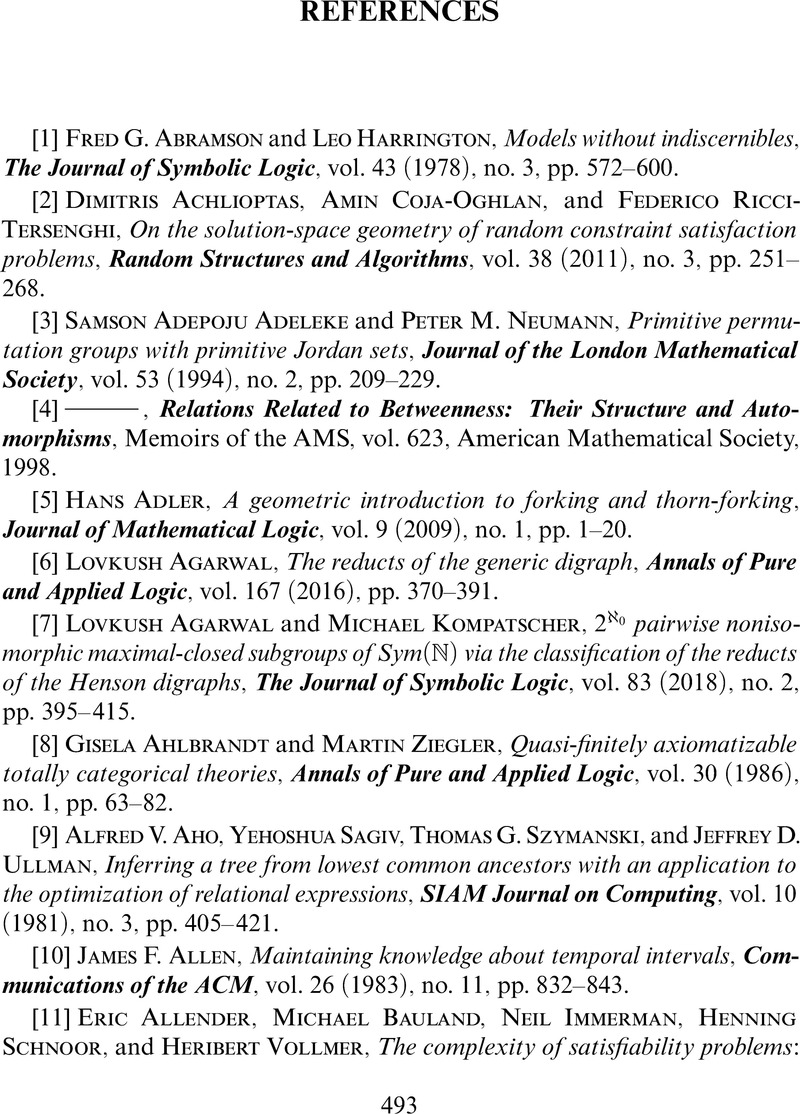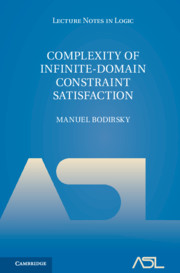Book contents
- Frontmatter
- Contents
- Acknowledgements
- Frontispiece
- Chapter 1 Introduction to constraint satisfaction problems
- Chapter 2 Model Theory
- Chapter 3 Primitive Positive Interpretations
- Chapter 4 Countably Categorical Structures
- Chapter 5 Examples
- Chapter 6 Universal Algebra
- Chapter 7 Equality Constraint Satisfaction Problems
- Chapter 8 Datalog
- Chapter 9 Topology
- Chapter 10 Oligomorphic Clones
- Chapter 11 Ramsey Theory
- Chapter 12 Temporal Constraint Satisfaction Problems
- Chapter 13 Non-Dichotomies
- Chapter 14 Conclusion and Outlook
- References
- Index
- References
References
Published online by Cambridge University Press: 28 May 2021
- Frontmatter
- Contents
- Acknowledgements
- Frontispiece
- Chapter 1 Introduction to constraint satisfaction problems
- Chapter 2 Model Theory
- Chapter 3 Primitive Positive Interpretations
- Chapter 4 Countably Categorical Structures
- Chapter 5 Examples
- Chapter 6 Universal Algebra
- Chapter 7 Equality Constraint Satisfaction Problems
- Chapter 8 Datalog
- Chapter 9 Topology
- Chapter 10 Oligomorphic Clones
- Chapter 11 Ramsey Theory
- Chapter 12 Temporal Constraint Satisfaction Problems
- Chapter 13 Non-Dichotomies
- Chapter 14 Conclusion and Outlook
- References
- Index
- References
Summary

- Type
- Chapter
- Information
- Complexity of Infinite-Domain Constraint Satisfaction , pp. 493 - 516Publisher: Cambridge University PressPrint publication year: 2021

